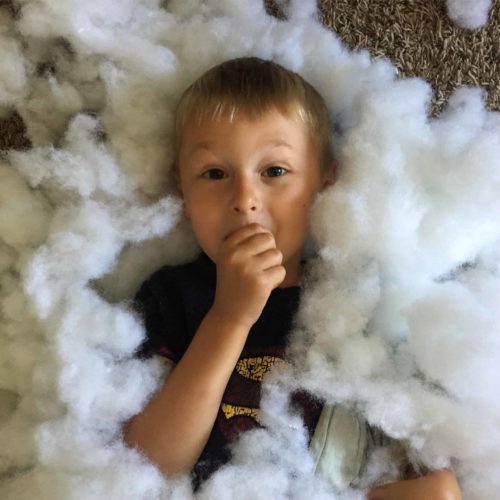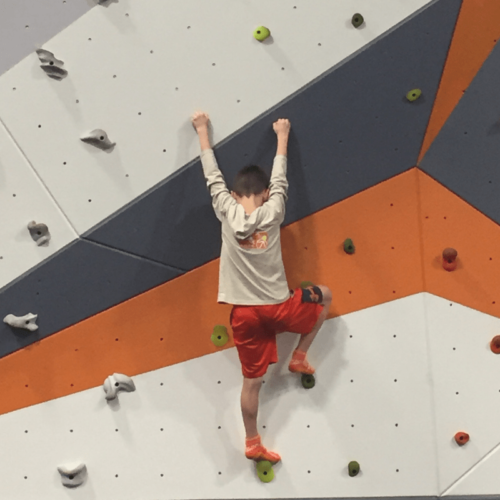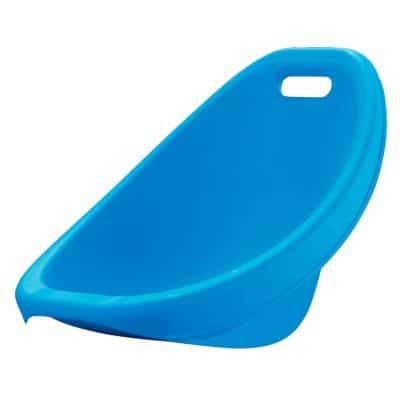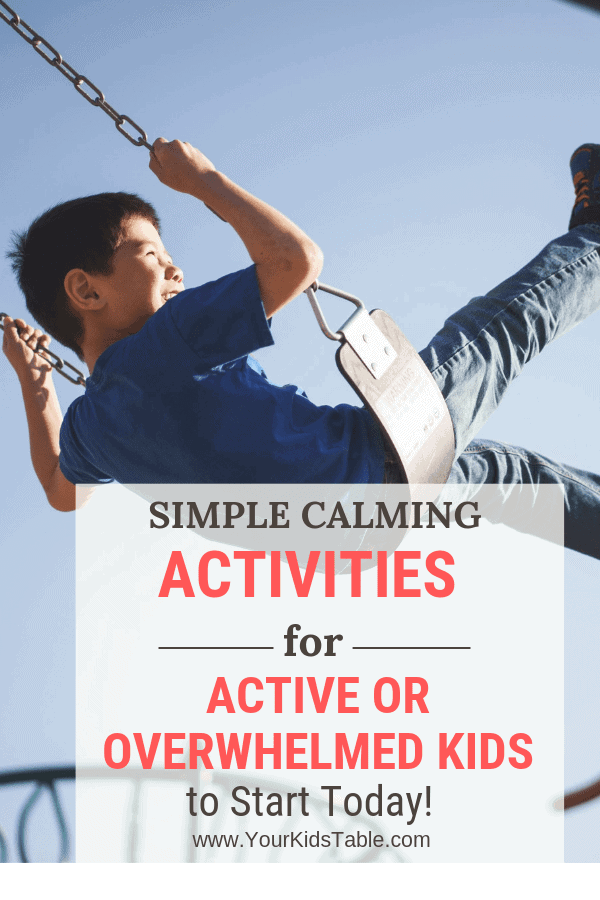Calming activities have the power to change how your child interacts, learns, and communicates if they’re very active or get overwhelmed easily. Someday they’ll thank you for teaching them how to calm down!
Imagine your child when they get out of the car after a 10 hour road trip. Are they calm or bouncing off the walls?
How about after a music blasting, lights flashing, birthday party with 30+ screaming kids… do they need to chill out?
Or, maybe your child melts down when they get home from school because they’re holding it all together throughout the day?
When kids have these surges of energy or overwhelm, it can be difficult for them to self-calm. Many haven’t learned that skill. A way that we can teach them to help themselves and calm down before a tantrum or your house gets torn apart is to use calming activities with a purpose!
When are Calming Activities Helpful?
Calming activities are helpful for all kids from time to time, but are needed more often for kids that are very active and can’t seem to settle down or kids that are overstimulated and can’t relax.
Depending on the situation and how often you need them, you can use calming activities:
- After, before, or during a chaotic social event
- When your child is running wild
- Before bedtime
- After or before school/daycare
- After or before any event that causes anxiety.
If you start to pay attention, you’ll notice that your child will give you clues for when they need a calming activity. They may become a little disconnected, make poor eye contact, become wilder, climb/jump dangerously, tantrum (may lead to a meltdown), or have a short temper.

As soon as you notice the slightest hint of one of those actions, I’d put your radar up and watch closely. First, evaluate if there’s anything you can do in the environment. Maybe you’re at a crowded restaurant and you can step outside and let them catch their breath or run up and down the sidewalk? This would be an example of using a calming activity during a chaotic event!
But, you may know the restaurant will be busy and loud, which means overwhelm for your child. So, before you even leave the house, they have some quiet time in a fort or play tent.
At the same time, you might not expect your child to get overwhelmed or wound up at the restaurant. You didn’t know doing an activity beforehand might help, and you didn’t notice any cues when you were in the middle of it, but in an effort to salvage the rest of your evening, you do a calming activity when you get home.
Obviously, knowing in advance or having something you can do right away are ideal, but there’s no right or wrong. It’s about helping your child when they need it, and that can vary from day to day.
Why Do Calming Activities Work?
Calming activities are a way to give sensory input to the mind and body. Since every child is unique, how your child responds to any activity can be unique as well. But, most kids do respond by calming down to the activities you’ll find below.
Think about activities that calm you down. For me, it’s swinging, I had my husband hang a good ole’ porch swing on our back patio primarily for me. I also love a hot bath or going on a walk. In fact, a few times in my life when I’ve gotten really angry and my body was pulsing with lots of energy, I even went for a run. And, I never run.
What all of these activities have in common is that different sensations through swinging, running, or sitting in a bath all allowed me to calm.
Of course, having quiet time away by myself was an important component too! These calming activities are actually sensory activities that counterbalance the high energy or over-stimulation we’re feeling. Another word for this is dysregulation. Find the right activity for your child when they’re dysregulated and it will help them come back into balance or regulation.
Calming Activities That Use Up Energy
Remember calming activities are particularly good for kids that are very active (aka sensory seekers) and can’t seem to calm down. My Isaac fits into this category about half of the time. He jumps wildly on the couch, runs at full speed around the dining room table, crashes into his brothers, and doesn’t hear me speak (or yell!) at him. For some kids, they’re always at this high energy and can’t calm down enough to eat dinner at the table or go to sleep.
These activities are particularly helpful to meet those intense sensory needs that they have and bring down their energy or arousal level:
Rhythmic Jumping: Count or sing a song with a steady beat (think “One, Two, Buckle My Shoe”) while jumping on a trampoline or bed.
Run With a Destination: Running around freely can wind some kids up even more, so pick two spots to run back and forth between, just like when athletes warm up with line drills. Run to touch the line (or tree) and run back to the beginning. Repeat over and over again.
Climbing: Think about climbing the monkey bars, a rope, a rock wall, or even a staircase on hands and knees.

All of these activities have a lot of direction behind them and give a ton of sensory input while using up energy. Check out this list of sensory seeking activities for a lot more ideas.
Having kids that seek sensory input start with movement based activities like the ones above is key, but following with some of the calming activities that help soothe (see the next section) will calm them down for a longer period of time.
Affiliate links used below. See our full disclosure.
Calming Activities That Help Soothe
All of the following activities tend to soothe kids, but you never want to force your child to participate in any of them. Instead the ones they gravitate towards are the ones that will help them the most. They instinctively know what will help calm them when they see it.
These are my favorite calming activities, as an occupational therapist:
Hang Upside Down: This is wonderful for vestibular seekers, that’s the kids that love movement. They can hang upside down over the couch, on the monkey bars, or with your holding them. Some kids that avoid movement will hate this activity, always use it with caution.
Roll a Wooden Massager Over Arms and Legs: I love this simple wooden roller, but lots of different options are available. This handle makes it easy for kids to grab and roll over their arms or legs, and when you’re able to help, it can be rolled on their back. This give lots of tactile and proprioceptive input to a large portion of the body, and it’s portable. Easy to use in the car or on a trip!
Slow Swinging: Swinging high and fast usually stimulates, but slow gently swinging is relaxing.
Take a Bath: Even from an early age, a bath can be a calming activity. Whether your child splashes about or leans back and slowly dumps water into different bath toys, the sensation of the water, the sound of the tub filling, and perhaps the smell of bubble bath or a few drops of essential oil can all calm a child!
Give a Shoulder Squeeze: I use this all the time in a public setting for quick calming input. If I notice one of my kids is getting anxious or wild, I’ll walk up behind them and firmly, with a deep pressure push down on their shoulders. Sometimes I’ll put my whole hand around their wrist and do the same.
Wrap Up Tightly in a Blanket: I call this the burrito roll up. Not all kids like it, but those that do, love it! Just wrap a blanket around your child like they’re getting a big hug.
Turn Off the Lights: Darkness calms, it gives us the sense of being in a cave, but adding some soft glowing light either in the way of Christmas lights or a cool hand held night light (shown below) that changes color can give a child something to focus on as they calm or drift off to sleep

Play in Soft Sand/Beans/Birdseed: Running hands through these textures is very soothing. Sand runs through the fingers easily and can be calming to watch as it pours through, but a lot of other textures work well too. Try putting these textures in a box to create a sensory bin.
Weighted Blanket/Weighted Lap Pad: Steady deep pressure is instantly calming for some kids. Some signs your child might respond well is if they love big deep hugs or crawl under a pile of blankets. See the weighted blanket guide or the the weighted lap pad guide for more details.
Use Vibration: Initially, vibration is jolting and jarring, but after 30 seconds our muscles melt into the vibration and relax. Some kids love vibration so much they lean up against the washing machine while it’s running. Vibrating teethers and cheap handheld massagers work great too.
Fidget With a Fidget: There are tons of different options. I love homemade stress balls that you can make by filling a balloon with flour, sugar, or cornmeal. But, check out this guide to fidgets to find one that would calm your child.
Rock in a Rocking Chair/Rocking Horse: You can sit with your child and rock together in a large chair or use a classic rocking horse toy. These small egg rockers are super inexpensive and work well too.

Listen to Soft or Rhythmic Music: This is not the time for jazz or anything with a wild beat. Instrumental music is often a good choice.
Calming Scents: I’ve used this essential oil diffuser for a couple of years for my kids. At first it was a nightly occurrence, when we were working through some significant anxiety they were dealing with, but now it’s as needed. You fill it up with a little bit of water and then put a few drops of essential oil in, and the smell fills the room, this is one of my favorite smell sensory activities.
Another option with essential oils is to use a roll on applicator, this is a calming one. You can swipe this across their wrists or the back of their neck in a few seconds.
Sensory Tent or Quiet Spot: This does not need to be elaborate. You probably have a cheap pop up play tent somewhere in your house and if not, a blanket over a couple of chairs works too! Remember how enchanting and cozy those forts use to feel when you climbed in one as a kid? They’re instantly calming. Having a space that blocks out all of the visual and muffles the auditory stimulation is incredibly calming.
Pile in some cozy pillows, favorite stuffed animals and other calming tools to make it the ultimate relaxation spot.
When would your child benefit from using calming activities and which ones do you think would help your child? When you share in the comments below, you may share an idea or thought that helps another parent. That’s pretty cool!
And, if you’re looking for a way to organize your kid’s sensory activities download this free sensory diet template. It will help walk you through exactly how and when to plan sensory activities that will help them the most.
More Calming Activities for Kids
The Most Awesome Smell Sensory Activities You Can Find
Powerful Proprioceptive Activities that Calm, Focus, & Alert
Incredible Heavy Work Activities to Regulate Kids
Everything Oral Sensory: The Total Guide
Alisha Grogan is a licensed occupational therapist and founder of Your Kid’s Table. She has over 19 years experience with expertise in sensory processing and feeding development in babies, toddlers, and children. Alisha also has 3 boys of her own at home. Learn more about her here.

I actually make a soap with my business Soothing Solutions hat has calming properties and a special gift on the inside for children. It is created with essential oils and ingredients condusive to Relaxation and Cleanliness. It is called Soothing Solutions and my kiddo loves it also friends that purchased for Christmas.
What a great idea Maria! So smart!
When the energy rises or anger sets in we use the mailbox as our point of destination. It’s about a block away. We grab a water bottler and offer a choice: will you go to the mailbox for me or should we go together. The water helps diffuse the stress chemicals in the body and walking side by side allows for more conversing (vs eye to eye). Now my child asks to go to the mailbox in the afternoons on their own.
Wow, this is so powerful!! I love when we can put these solutions into our routines. Everybody might not have a mailbox a block away, but this could be adapted in so many ways. Brilliant, thanks Berna!
To add to the “calming scent” section, you can get bracelets that are made to absorb small amounts of essential oils. I always wear my bracelet and put a few drops of “Stress Away” on it in the mornings. When my kids start riling up, I ask them if they need “the good smell”, and they usually say yes and it seems to have an almost immediate impact. Different kids like different smells though, and I do think that part of it is that I introduced the smell first during a few moments of calm and still use it during moments of calm so they don’t automatically associate it with feeling stressed and out of control.
Meredith, this is incredible. I’ve wanted to use the bracelets before, but I love that you took it a step further with the cue for “the good smell”. So helpful, so glad you shared:)